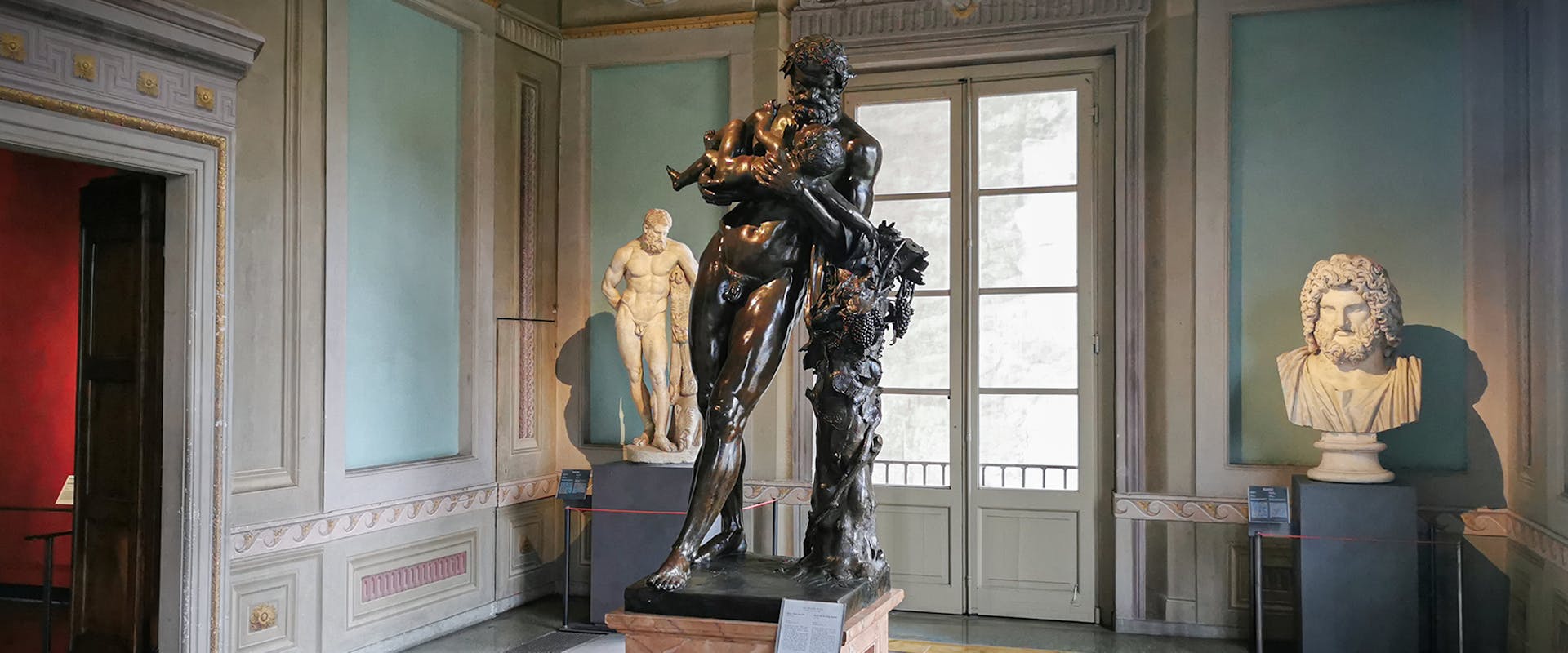The 16th-century bronze masterpiece depicting Silenus with Bacchus as a Child shines again
The restoration, which lasted over six months, has been the first one carried out in modern times on the statue by Jacopo del Duca, a bronze copy after an ancient marble allegedly by Lysippos
The restoration
After a complex restoration lasted over six months, the bronze "complexion" of one of the leading lights of the Verone Corridor on the first floor of the Uffizi Gallery is glowing again: we are talking about the large statue of Silenus with Bacchus as a Child by the sixteenth-century artist Jacopo del Duca.
The restoration has been the first recovery intervention carried out on the statue in modern times. It had become necessary because of the excessive darkening of the bronze caused by many retouchings and corrections made on the surface of the Silenus over the centuries. Also, its base needed to be reinforced because of the presence of microcracks in several points.
Carried out by Flavia Puoti from the Uffizi Galleries and Veronica Collina, the restoration began last June and ended a few days ago. The first diagnostic survey carried out in collaboration with the Opificio delle Pietre Dure has provided information on the problems of the statue, which has also allowed to fully distinguish the sculpture's original materials from additions deriving from previous restorations. An accurate dusting of all surfaces has been carried out according to the specific needs of each different area of the bronze. In fact, chemical cleaning through mixtures of organic solvents has been alternated with mechanical cleaning through brushes mounted on a dental microdrill. Some small gaps have been filled with pigmented microcrystalline wax and then the points that showed the greatest chromatic differences have undergone a pictorial retouching. Deformations and microcracks of the base have been reduced with the help of clamps and a controlled supply of heat. At the end of the intervention, a protective product has been applied to further safeguard the "complexion" of the sculpture.
The history of the work
The subject derives from a marble statue, now preserved in the Louvre, which is a Roman copy from the Imperial era after a bronze dating back to the late 4th century BC allegedly by Lysippos. The Louvre Silenus (the so-called Borghese Silenus) was found in the second half of the sixteenth century in the garden of Carlo Muti in Rome, near the area formerly occupied by the gardens of Sallust. The bronze copy of the Uffizi, attributed in 1993 by Paola Barocchi and Giovanna Gaeta Bertelà to Jacopo del Duca, was commissioned by Ferdinando I de' Medici. In 1588, the Grand Duke placed the sculpture, together with Bartolomeo Ammannati's Mars Gradivus, inside the gallery of Villa Medici in Rome. Both bronzes were later moved in front of the villa’s portico next to Giambologna's Mercury fountain. In 1787, at the behest of Peter Leopold of Habsburg-Lorraine, Ammannati's Silenus with Bacchus as a Child and Mars were brought to Florence and displayed in the Uffizi Gallery, where they are still found today.
See the relevant insight: Silenus and Bacchus as a Child
